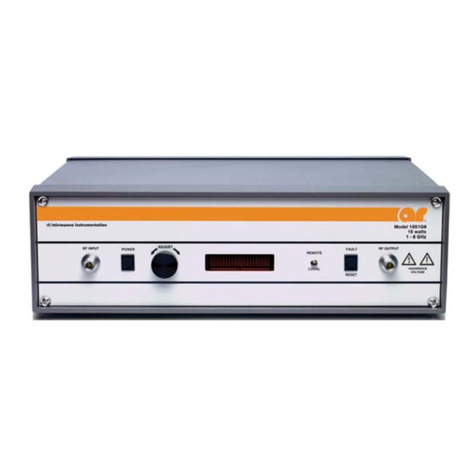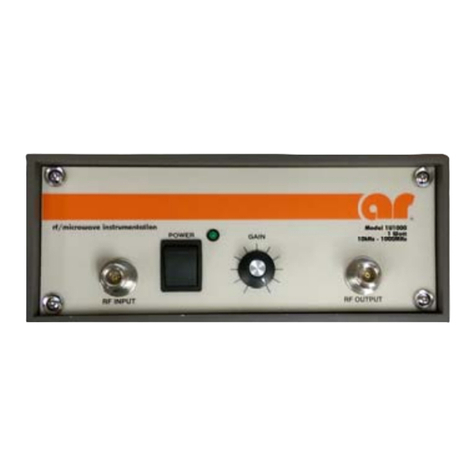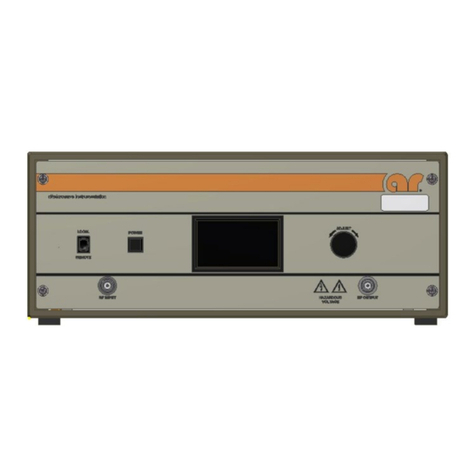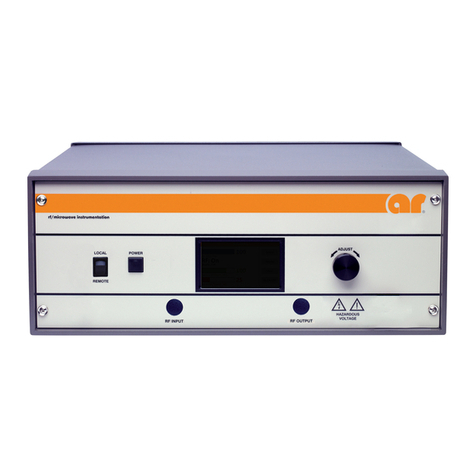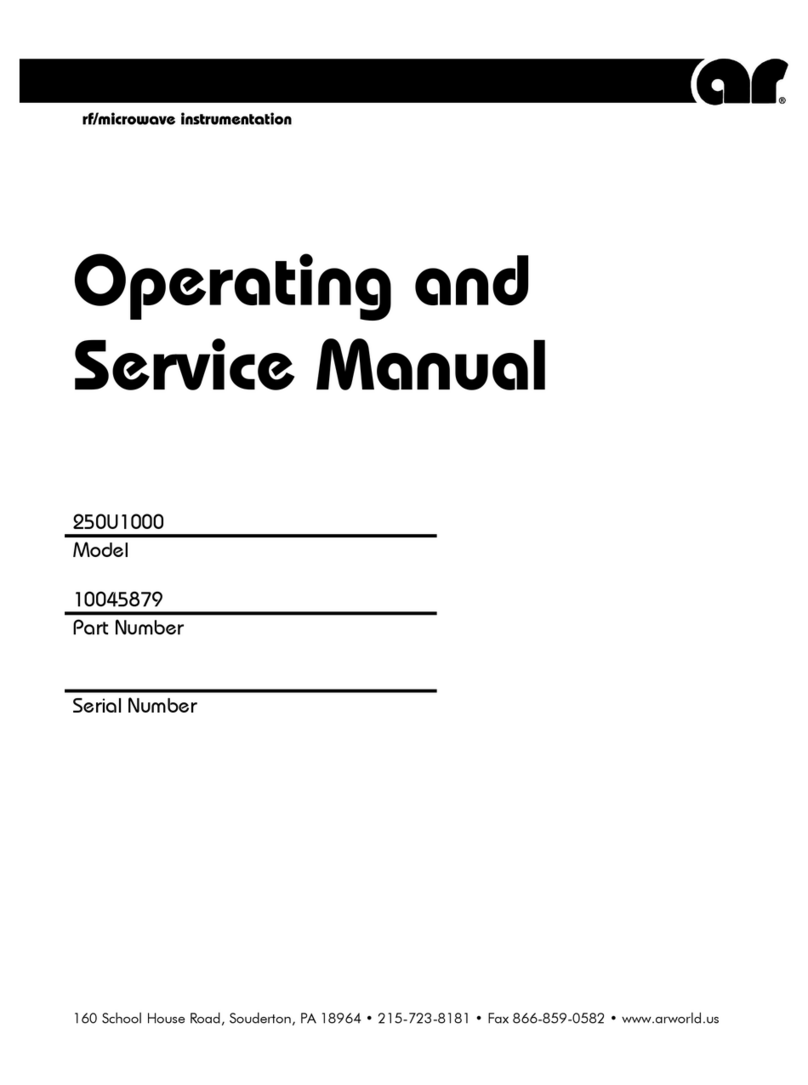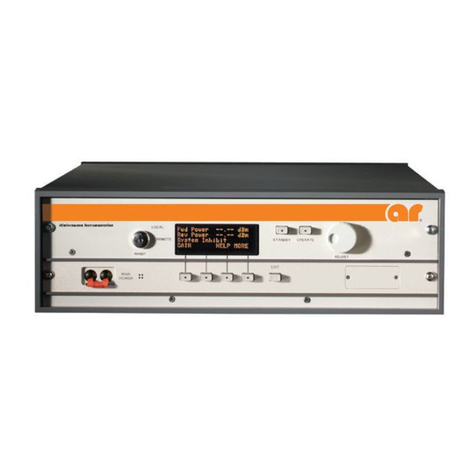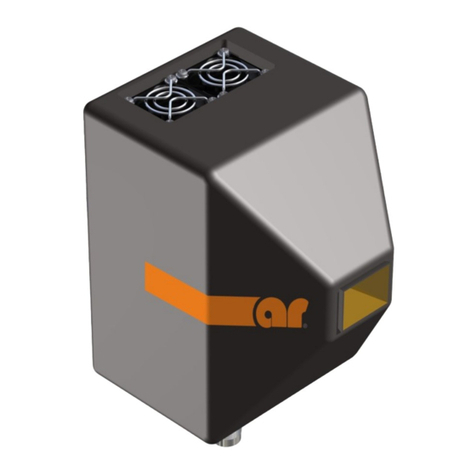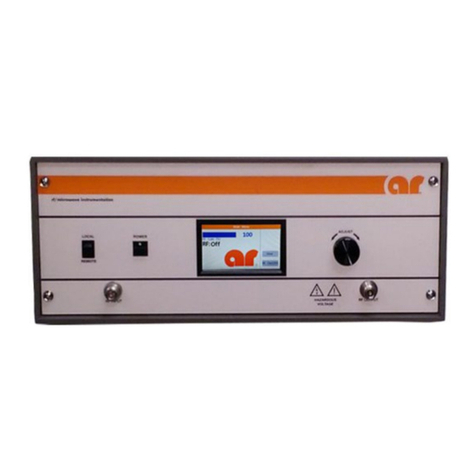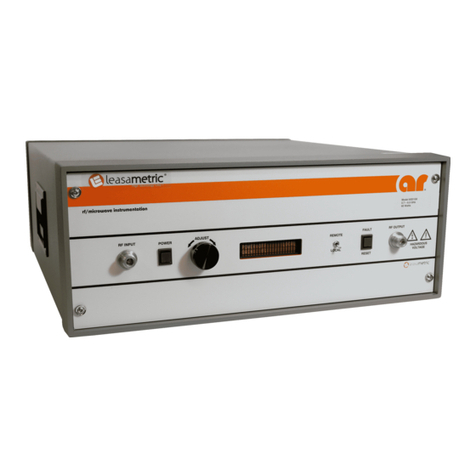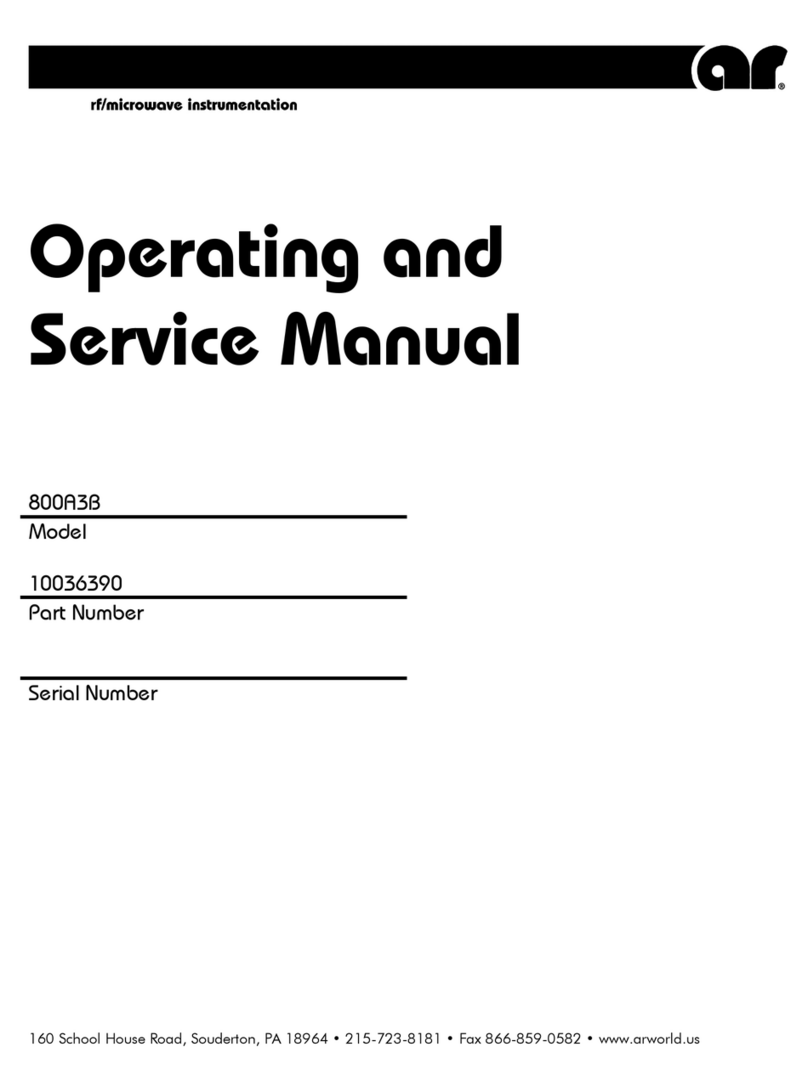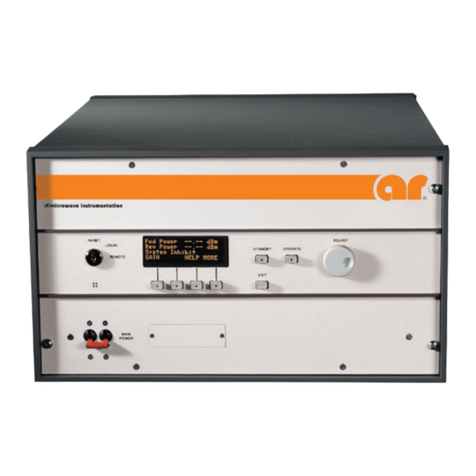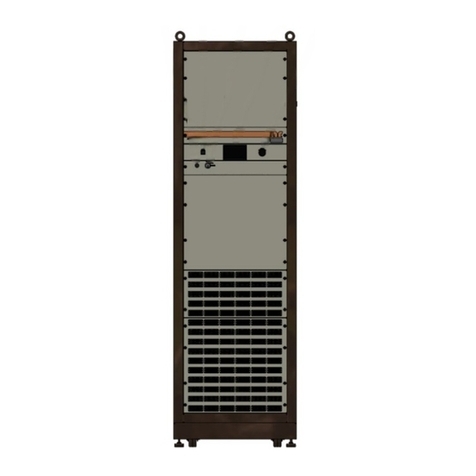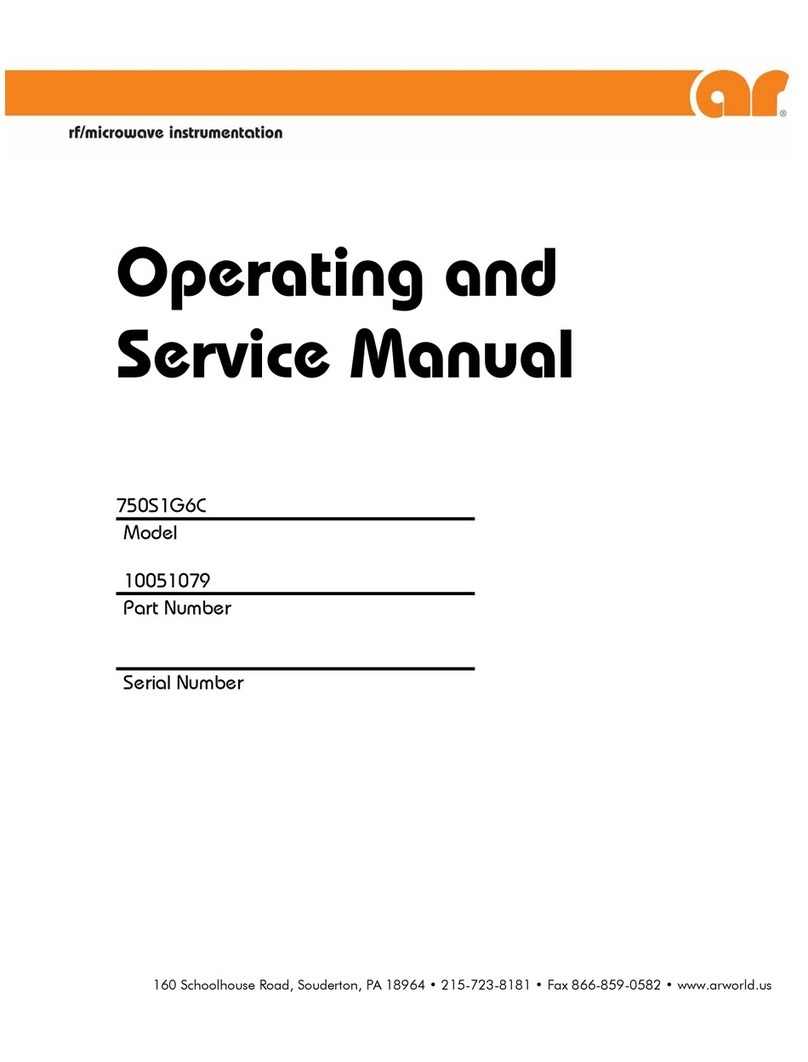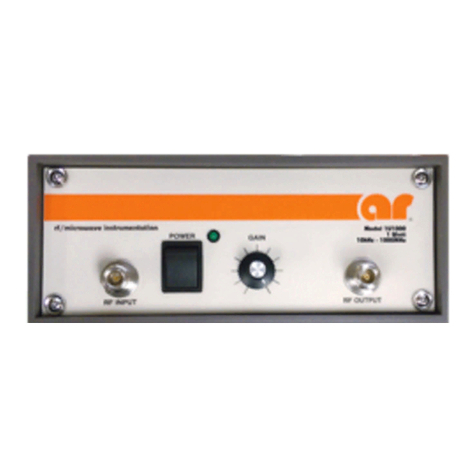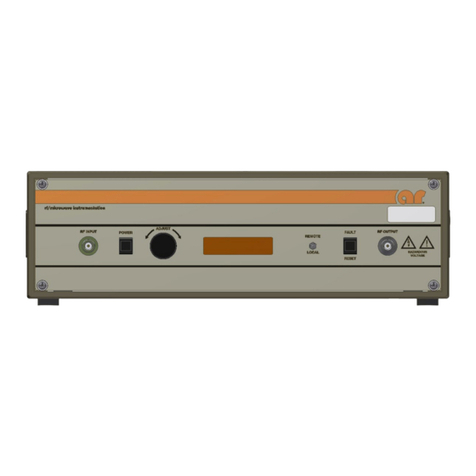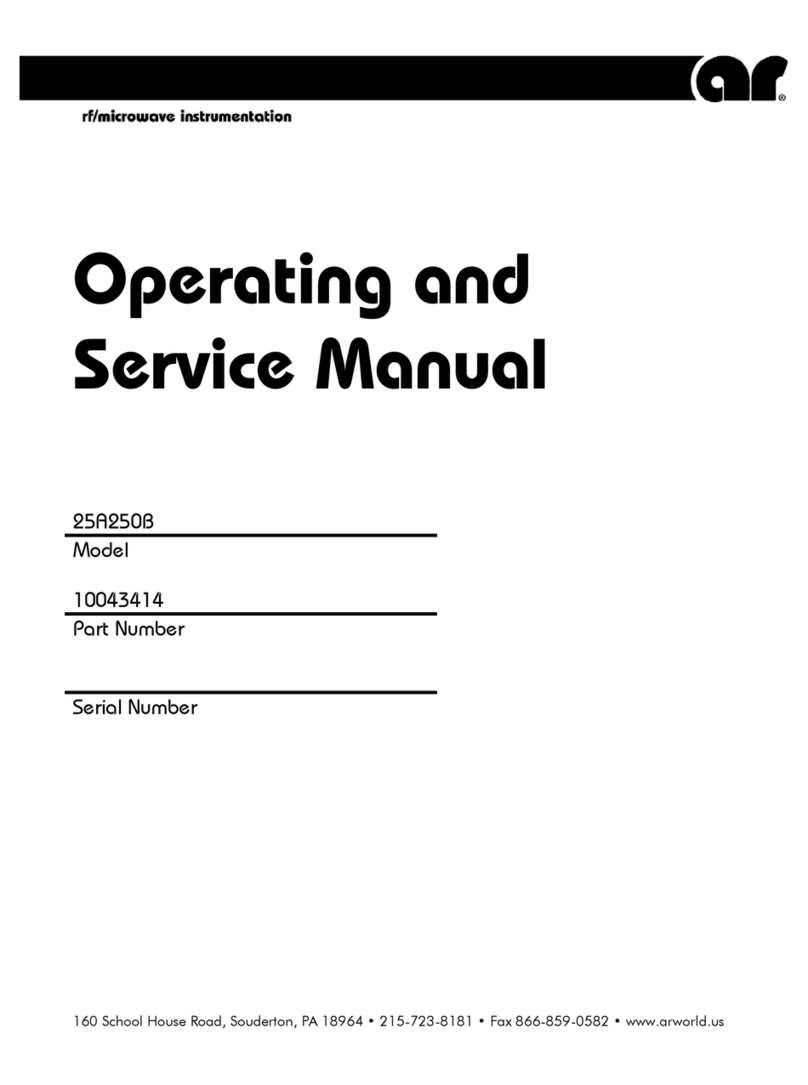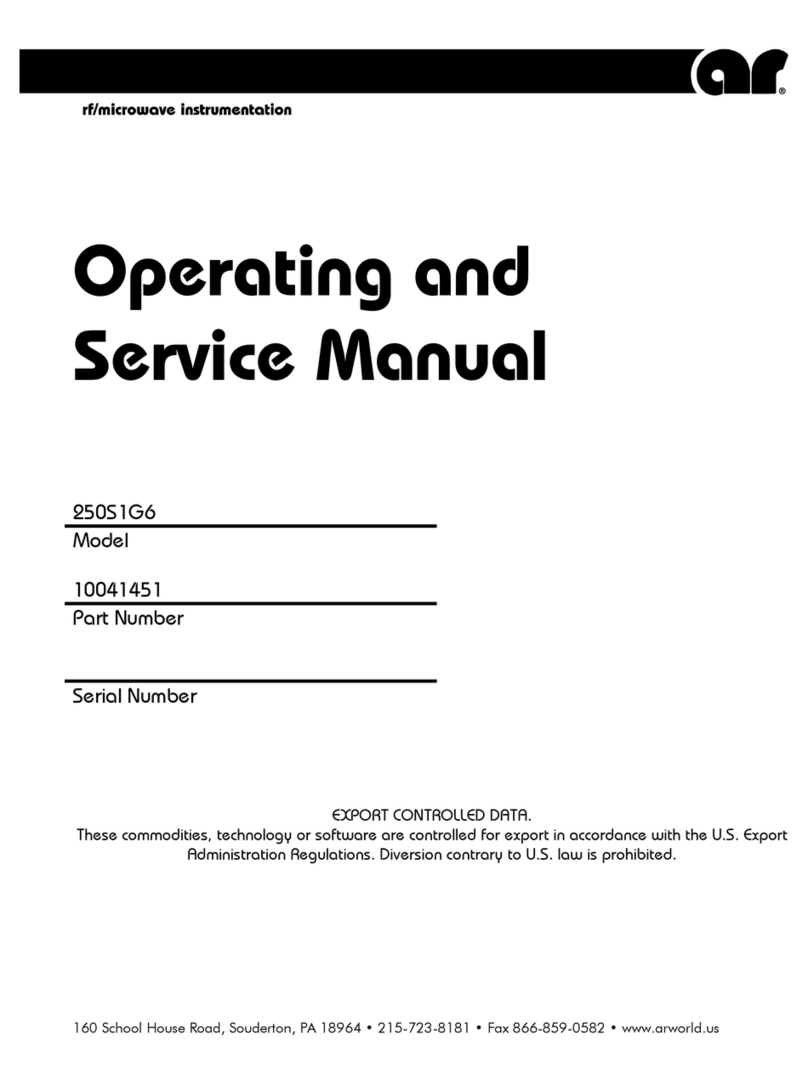
INSTRUCTIONS FOR SAFE OPERATION
BEFORE APPLYING POWER
Review this manual and become familiar with all safety
markings and instructions.
Verify that the equipment line voltage selection is
compatible with the main power source.
Protection provided by the equipment may be impaired if
used in a manner not specified by Amplifier Research.
INTENDED PURPOSES
This equipment is intended for general laboratory use in a
wide variety of industrial and scientific applications. I t is
designed to be used in the process of generating, controlling,
and measuring high levels of electromagnetic Radio Frequency
(RF) energy. Therefore, the output of the amplifier must be
connected to an appropriate load such as an antenna or field-
generating device. It is the responsibility of the user to assure
that the device is operated in a location which will control the
radiated energy such that it will not cause injury and will not
violate regulatory levels of electromagnetic interference.
HAZARDOUS RF VOLTAGES
The RF voltages on the center pin of the RF output connector
can be hazardous. The RF output connector should be
connected to a load before AC power is applied to the
amplifier. Do not come into contact with the center pin of the
RF output connector or accessories connected to it. Place the
equipment in a non-operating condition before disconnecting
or connecting the load to the RF output connector.
SAFETY GROUND
This equipment is provided with a protective earth terminal.
The main power source to the equipment must supply an
uninterrupted safety ground of sufficient size to the input
wiring terminals, power cord, or supplied power cord set. The
equipment MUST NOT BE USED if this protection is
impaired.
PHYSICAL DAMAGE
The RF amplifier should not be operated if there is physical
damage, missing hardware, or missing panels.
MAINTENANCE CAUTION
Adjustment, maintenance, or repair of the equipment must be
performed only by qualified personnel. Hazardous energy may
be present while protective covers are removed from the
equipment even if disconnected from the power source.
Contact may result in personal injury. Replacement fuses are
required to be of specific type and current rating.
SAFETY SYMBOLS
This symbol is marked on the equipment
when it is necessary for the user to refer to
the manual for important safety information.
Dangerous voltages are present. Use extreme
care.
CAUTION: The caution symbol denotes a
potential hazard. Attention must be given to
the statement to prevent damage, destruction,
Indicates protective earth terminal.
RANGE OF ENVIRONMENTAL CONDITIONS
This equipment is designed to be safe under the following
environmental conditions:
•Indoor use
•Altitude up to 2000M
•Temperature of 5°C to 40°C
•Maximum relative humidity 80% for temperatures up to
31°C. Decreasing linearly to 50% at 40°C.
•Main supply voltage fluctuations not to exceed ± 10% of
the nominal voltage or minimum and maximum
autoranging values.
•Pollution degree 2: Normally non-conductive with
occasional condensation. While the equipment will not
cause hazardous condition over this environmental range,
its performance may vary.
COOLING AIR
Care should be exercised not to block the cooling air inlets or
outlets. Cooling air blockage can result in damage to the RF
amplifier or intermittent shut-downs.
WARNING: EXPORT-CONTROLLED
WARNING: EXPORT-CONTROLLED



